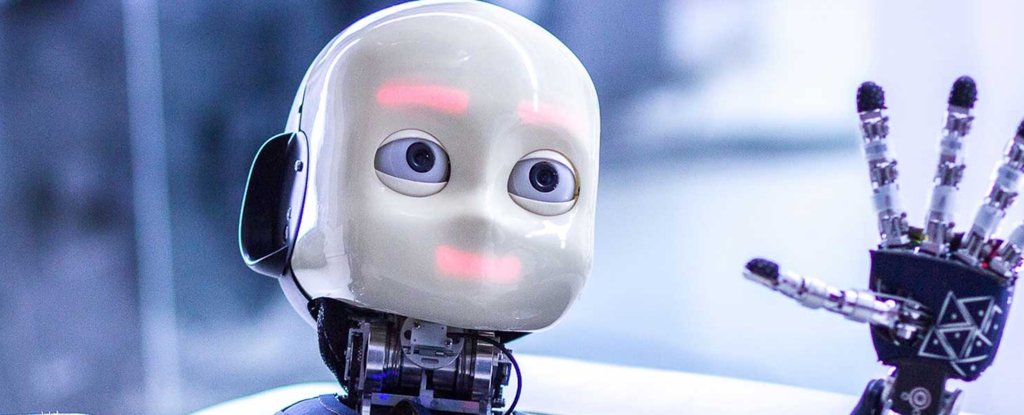
When you know someone is watching you, it’s hard to pretend they’re not there. It can be hard to block them and keep the focus, feeling their gaze down on you.
Interestingly, it doesn’t even seem to matter if they live or not.
In new research, scientists created an experiment where people played a game against a robot.
If the robot looked at human players during the session, it ended up affecting the behavior and strategy of the participants in the game, a change that could be discerned in the measurements of their neural activity recorded by electroencephalography (EEG) during the experiment.
“If the robot looks at you for the moment you need to make a decision about the next step, you will have more difficulty making a decision,” says cognitive neuroscientist Agnieszka Wykowska of the Italian Institute of Technology.
“Your brain will also have to employ costly and strenuous processes to try to ‘ignore’ this robot look.”
In the experiment, 40 participants sat in front of an iCub humanoid robot, competing in a “chicken” game on a horizontal computer screen, in which two simulated cars crashed head-on into each other. .
Just before the moment of impact, the game would stop and participants were asked to look up at the robot, which would either meet their gaze or look away. During this moment, participants had to decide whether to let their cars run or deviate to the side.
The results of the experiment showed that the robot’s return gaze did not influence the choices made by individual human players, but caused their response time to increase slightly, and participants generally responded more quickly to the game. when the iCub looked away.
“In line with our hypothesis, delayed responses within subjects after mutual gaze may suggest that mutual gaze involved higher cognitive effort, e.g., provoking more reasoning about iCub options or a greater degree of suppression. of the (potentially distracting) gaze stimulus, which was irrelevant to the task, ”the researchers explain in their work.
 Representation of iCub and a participant. (IIT)
Representation of iCub and a participant. (IIT)
According to the researchers, this change in player behavior corresponded to a change in neural activity called synchronized alpha activity, a pattern of brain waves that had previously been associated with attention suppression.
Moreover, when viewed throughout the experiment, increased exposure to the avoided gaze (where the robot did not look back) among participants seemed to help players disassociate themselves from social interaction with the iCub and focus in his game with less distraction.
Given that the iCub is a humanoid robot, fluidly designed to mimic the shape and appearance of people, it may not be entirely surprising that a robot’s gaze can trigger our usual attention processes.
But researchers say it could have implications for designing more advanced and interactive robots in the future.
“Robots will be more and more present in our daily lives,” Wykowska says.
“That’s why it’s important to understand not only the technological aspects of robot design, but also the human side of human-robot interaction … how the human brain processes the behavioral signals that robots transmit.”
The findings are reported in Robotic Science.